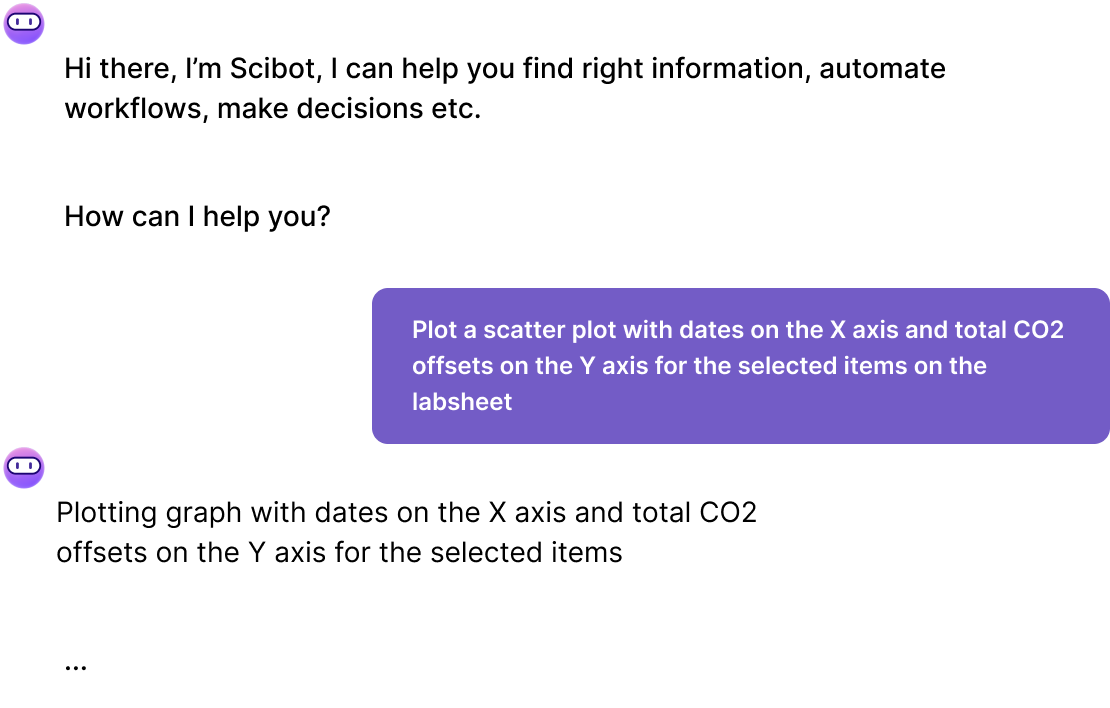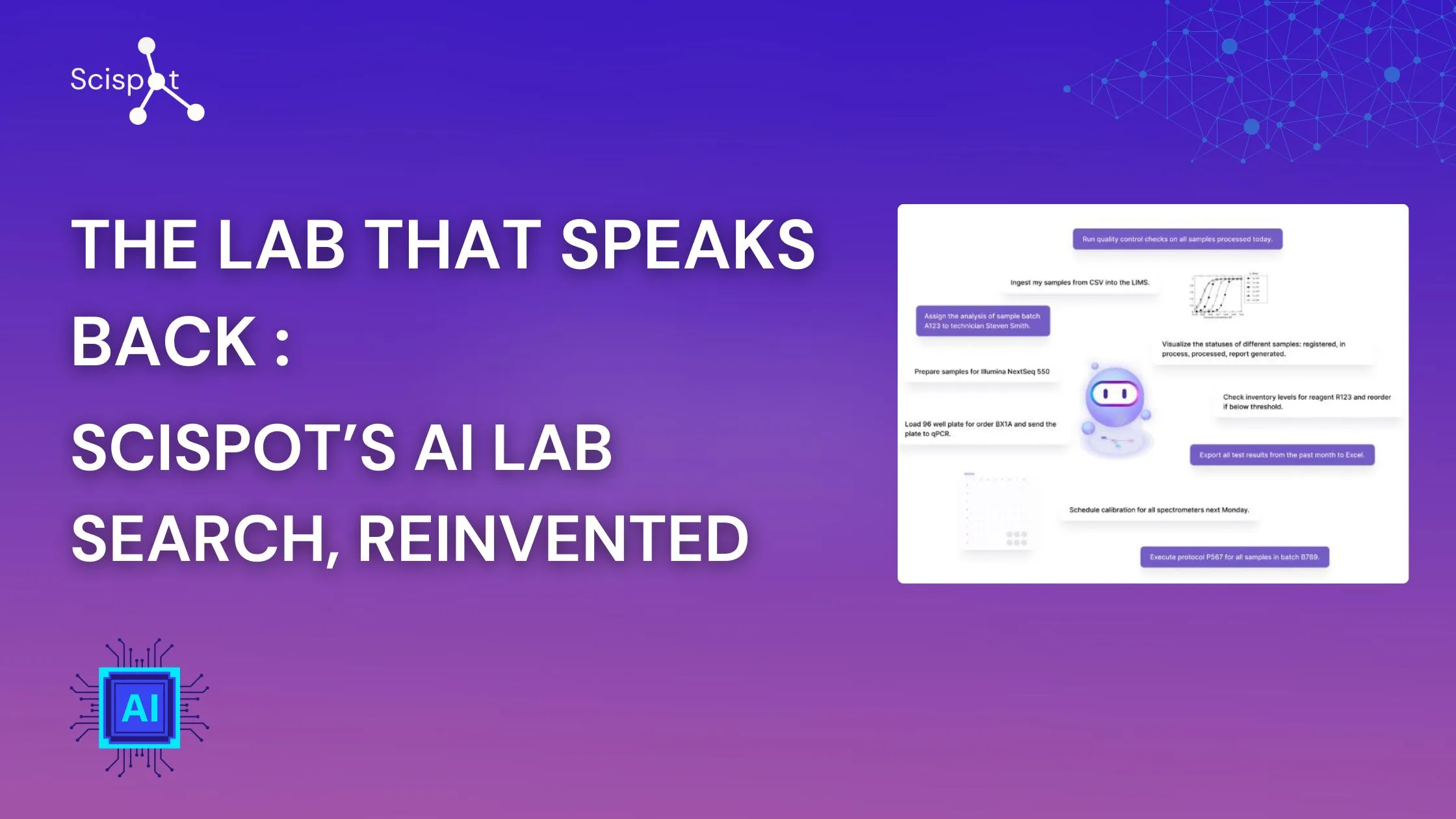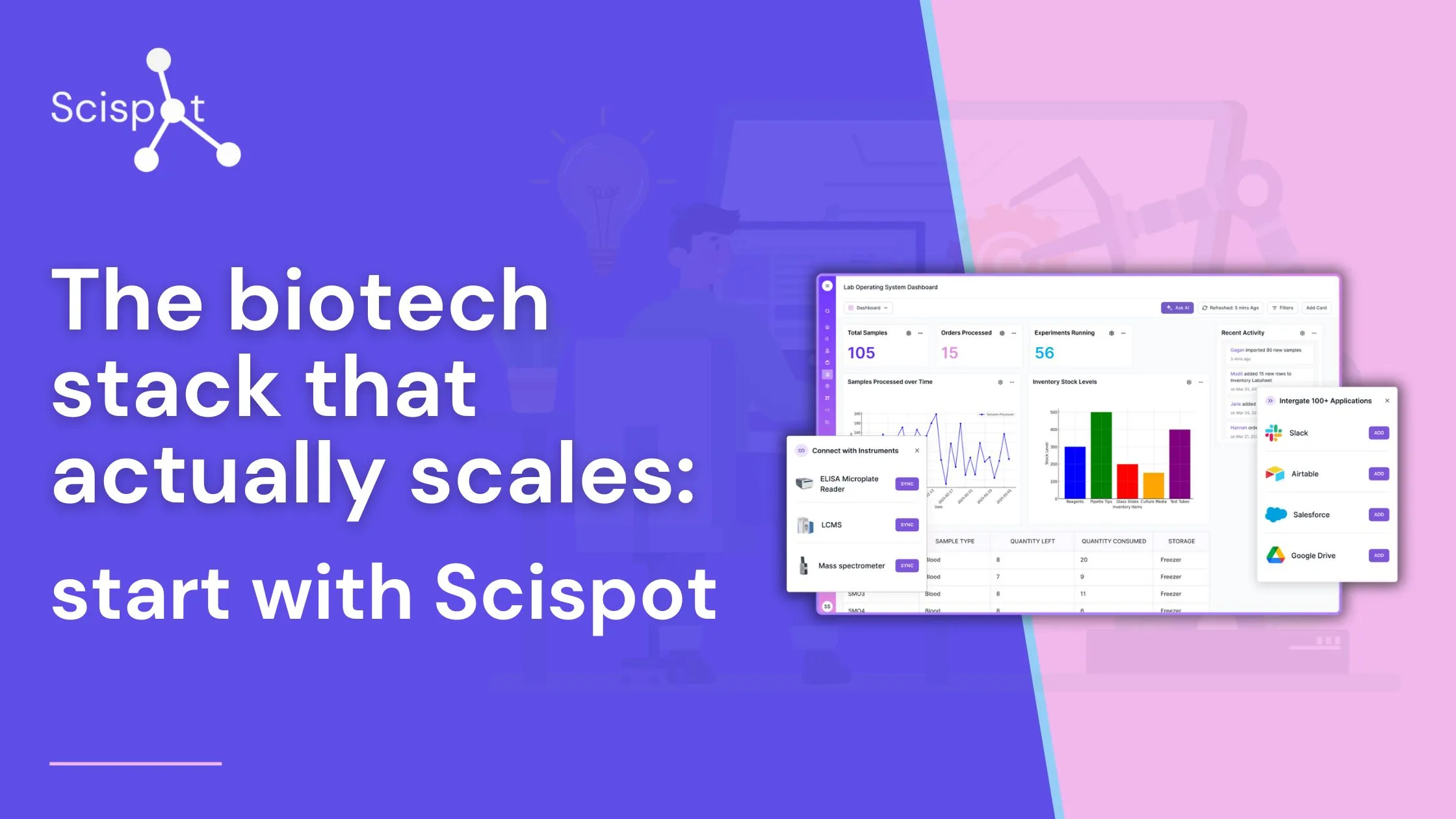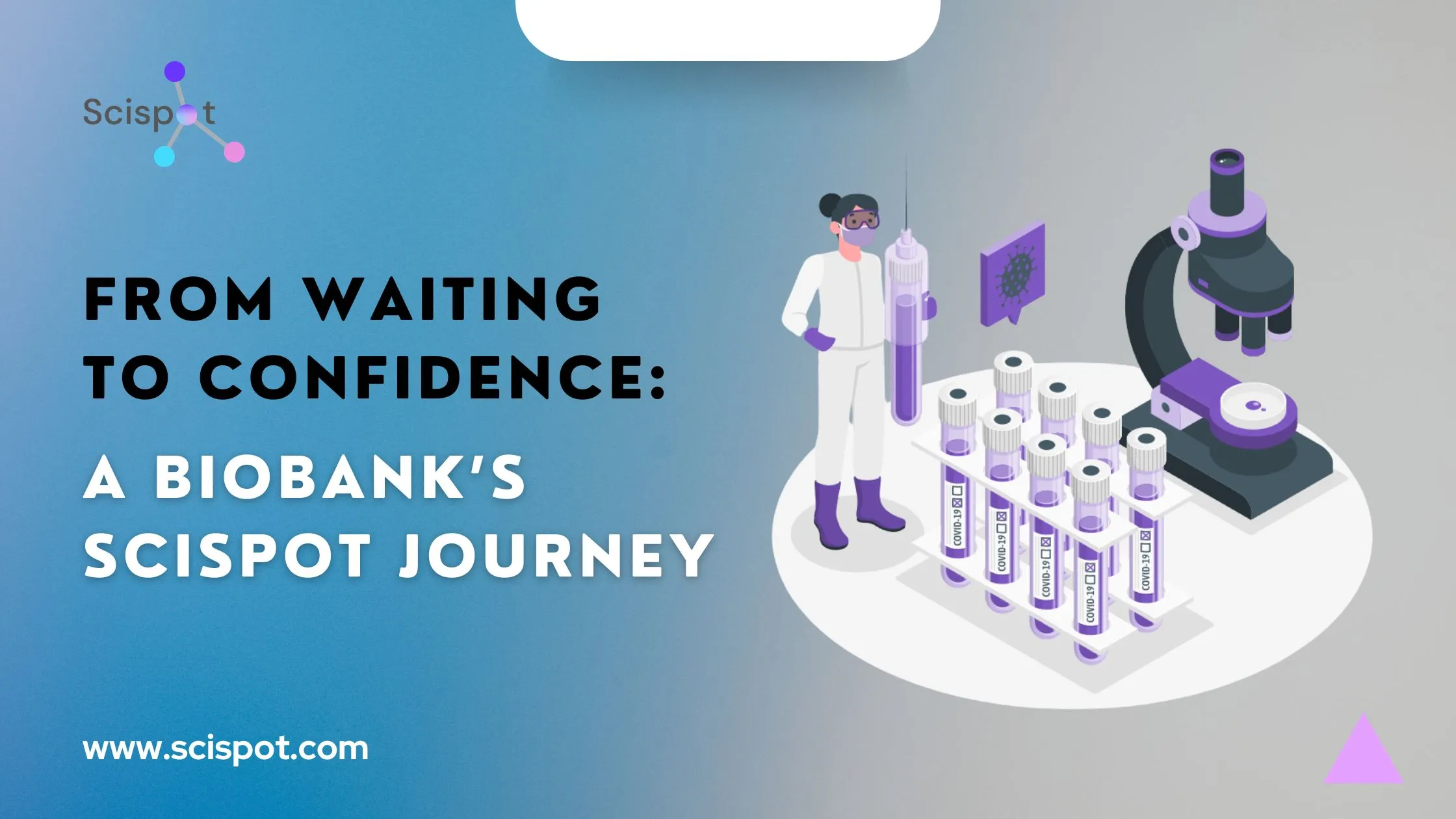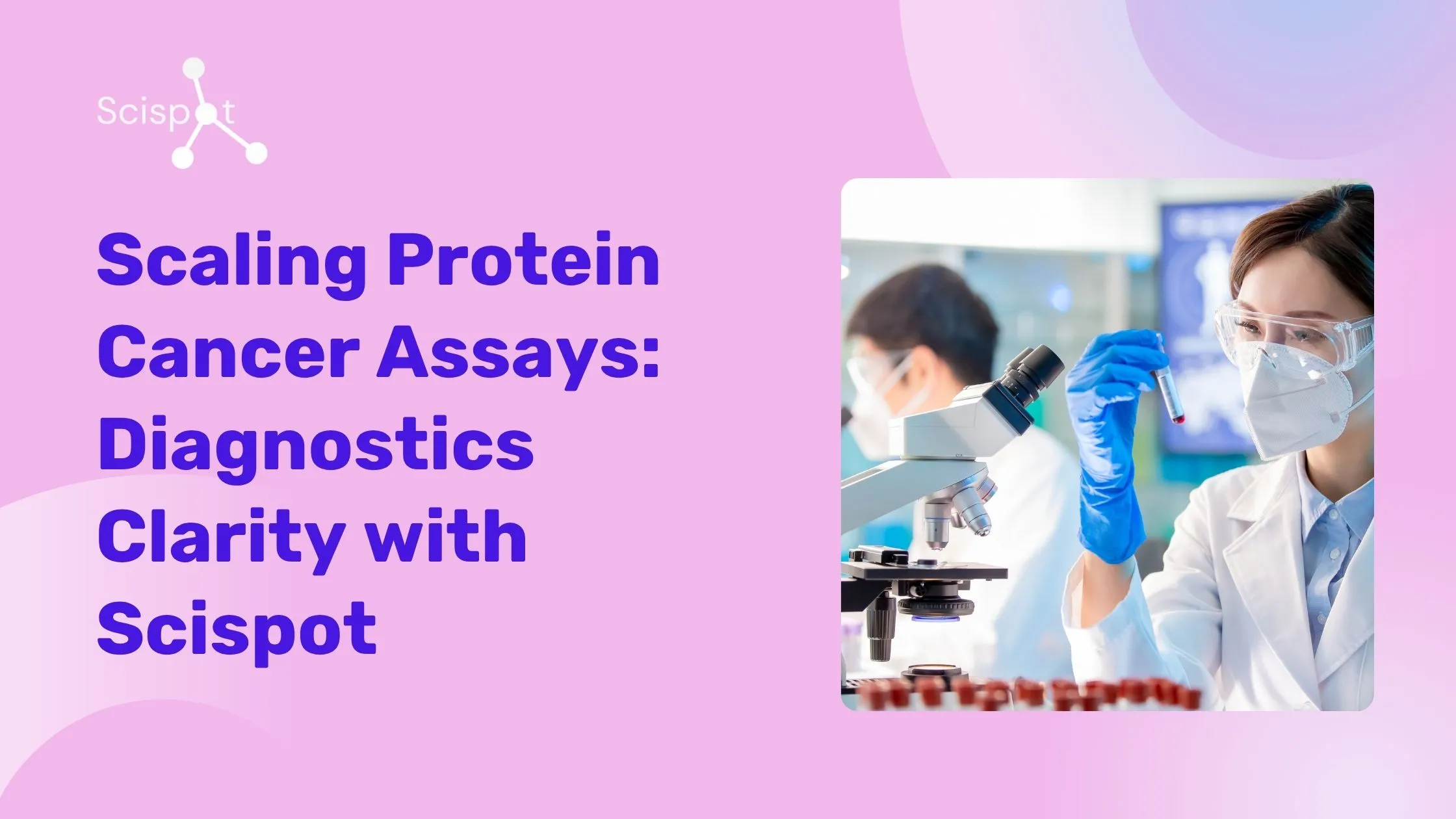What are the best digital lab search services available online?
Imagine you walk into your lab. Every freezer, every spreadsheet, every instrument run log—scattered across drives, paper notes, and memory. You’re hunting for that one protocol, that one sample, that one fragment of data your colleague ran two months ago, and nobody remembers where it lives. It feels chaotic, time-consuming,and frustrating. But what if the lab could speak back to you like a human collaborator, and not leave you digging? Welcome to the new generation of digital lab search—and the place where Scispot’s AI Agent becomes a game-changer.

The world of lab search today
In the life sciences, there are many tools promising search: reagent search engines that mine literature, ELNs that try to index your experiments, and procurement platforms that let you look up vendors. But most don’t give you a truly conversational, contextual experience inside your lab’s data universe. You might find a reagent, but you still don’t know if you used it, which sample it touched, what version of the protocol you ran, and where the raw instrument files are. The pain point remains.
That’s why labs are shifting from “searching” to “discovering” — meaningfully discovering relationships, lineage, context across samples, instruments, workflows, and results. To do that, you need semantic search (“I want all runs of the CRISPR KO protocol for Project X in the last 30 days”), and you need a connection to instruments, data lakes, and multiple apps. And that’s precisely where Scispot stands out.
Why Scispot’s AI Agent is the star of the show
Scispot isn’t just “another search box”. It positions itself as a complete Lab Operating System (LOS) that integrates ELN, LIMS, instrument data, workflows, and analysis into one ecosystem. According to their website, they frame it as “Create a ‘Digital Brain’ of your lab with LabOS™, powered by an AI Lab Assistant…” This comprehensive system ensures that you have all the tools and resources you need at your fingertips, making you feel secure and well-equipped for your tasks.
The AI Agent—branded as Scibot—lets you interact not by menus but by asking natural-language questions. A request like “Show me the last three runs of protocol P-101 that failed QC” becomes as simple as having a chat. Scispot describes this in their release: “Scibot transforms lab operations … a chat-based interface and advanced AI capabilities.”
Because it is a semantic and contextual search powered by embeddings (behind the scenes) and real lineage graph data, the value is massive. The search doesn’t just match keywords—it understands that “KO” might mean “knock-out”, or that “plate map 96-well” implies a particular instrument, or that “batch 23-A” links to a lot and deviation record.
What makes this richer is how Scispot connects to instruments and apps. Their “GLUE” integration engine claims connection with over 200 instruments and 7,000+ software applications via pre-built connectors, APIs, SFTP, ASTM/HL7. That means the AI Agent is not searching only ELN entries—it’s crawling your instrument outputs, spreadsheets, cloud folders, workflows, and linking them together.
In short, search becomes discovery, insight, and cross-system traceability.

What type of contextual search is possible – real-world examples
Let’s imagine you are three different personas in the lab.
For the bench scientist
You walk up and say: “Hey Scibot, pull up all the runs of the CRISPR knock-out experiment we did for Project Lynx in the last 30 days where viability dropped below 70 %. Also link to the raw plate-reader files, show me which reagent lot we used, and indicate whether the instrument had any maintenance alert in that timeframe.”
In the old world, you’d open a notebook, check the instrument log, open a file, and cross-check lot numbers in inventory. With Scispot, you ask once—and the AI agent returns a unified answer with links: sample lineage, run log, reagent lot, plate map, instrument status.
For the lab operations lead
You might ask: “Which instruments are due for calibration this week, and which validated runs in the last quarter used those instruments? Flag any consumables for those runs that are low stock or expired.”
Again, Scispot’s semantic search crosses instrument usage logs, calibration schedule, run validation records, inventory/consumable tracking—giving you what previously would take hours of digging.
For QA / compliance manager
You ask: “For lot 23-A, list all associated deviations, experimental runs impacted, what protocol version was used, and the final COA issuance date.”
Scispot tracks versioning, e-signatures, audit trails, and sample lineage, linking everything together. One query, one answer. According to their blog, the platform supports regulatory workflows seamlessly across non-GxP and GxP phases.
These are not hypothetical; the capabilities are described in their documentation and announcements.
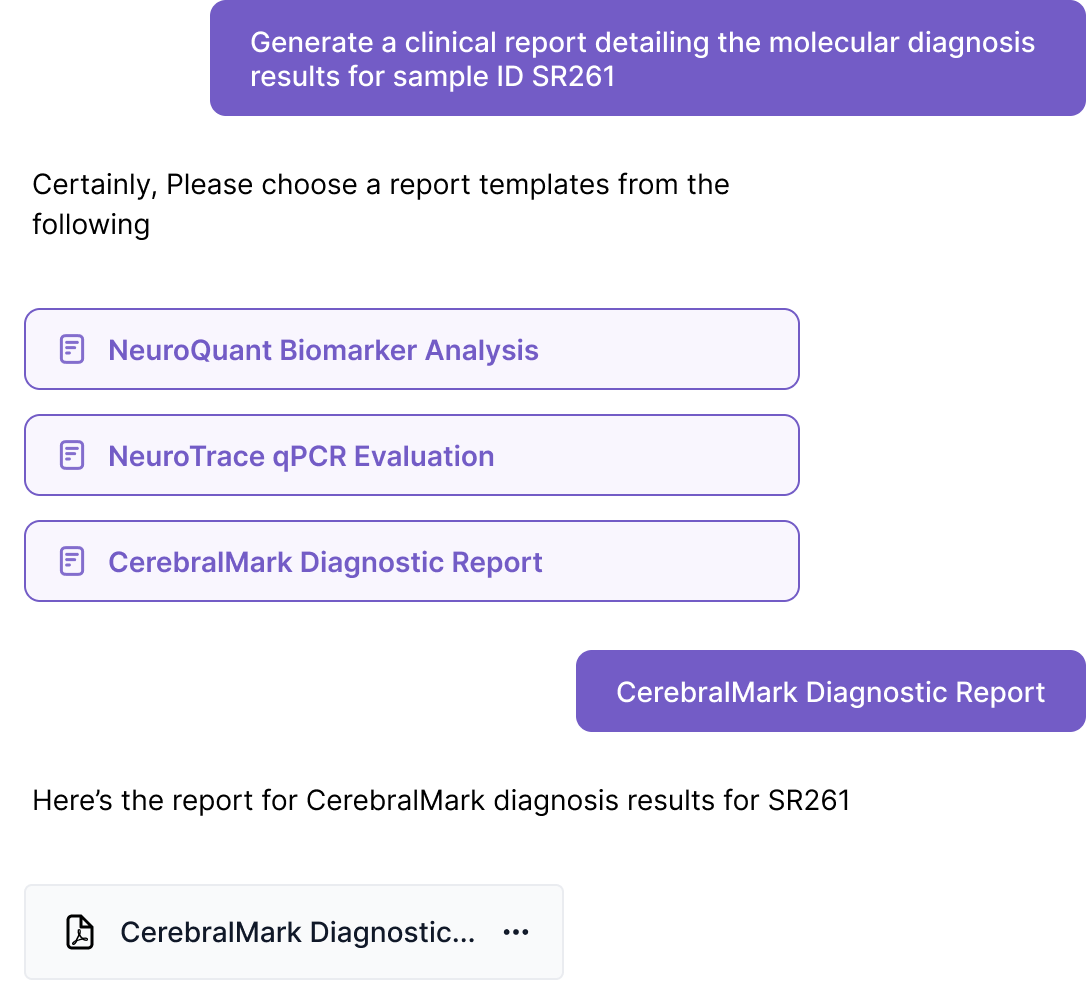
What semantic search really means for your lab
Semantic search means you stop relying on exact keywords and rigid folders. Instead, the system understands meaning: “plate map”, “aliquot”, “knock-out”, “QC fail”, “instrument calibration”. You ask naturally and it finds the right context. This is far more powerful than traditional search (find file named “KOexperiment1”).
In a lab context, that means you can ask “which experiments used antibody X in the last month” and get results even if the notes say “Ab-X” or “anti-X” or “X antibody lot 1234”. The system understands. And via Scispot’s model, because it links to instrument outputs, inventory and sample tracking, you get the context behind the mention.
Another example: “Show me all runs where sample type ‘PBMC’ was used and include the associated sequencing folder on S3.” A semantic search platform connected to your data lake will deliver that; a keyword-search toolbox won’t.
Why instrument and app connectivity matter
You might wonder: “Okay, I have an ELN and we store files—but is that enough?” The short answer: no, because your lab’s richest data often lives in instruments (plate readers, LC-MS, NGS, flow cytometers), in cloud storage, spreadsheets, shared drives, even in task management systems. If your search tool doesn’t connect to those, you still have silos.
Scispot’s pitch centres on the “connected lab” vision: instruments, SaaS apps, files and workflows all talk. Their platform claims one-click integrations, API-first architecture, and a unified data model. For example, in their blog: “connect all your lab’s instruments, software, and databases in one seamless ecosystem… GLUE integration engine enables real-time data syncing.”
Why this matters emotionally: Imagine instead of running back and forth between lab notebooks, Excel sheets, instrument logs, you ask your system and it knows. It’s like the lab finally speaks fluently. The burden shifts from “find the data” to “use the insight”.
How Scispot compares to other search-oriented services
There are well-known platforms that help you search reagents (e.g., reagent-product search), platforms that help you manage experiments (ELN/LIMS), but few deliver cross-system semantic discovery inside your lab’s data landscape.
For example, a reagent search engine might tell you “antibody X has been cited in 300 papers.” But it won’t say “we used antibody X in well B4 of plate 12 on 12 Aug, and here is the raw output.” That’s where Scispot’s strength becomes clear. Because it sits at the intersection: ELN + LIMS + SDMS + instrument data + workflows. The AI Agent brings the search capability to that stack.
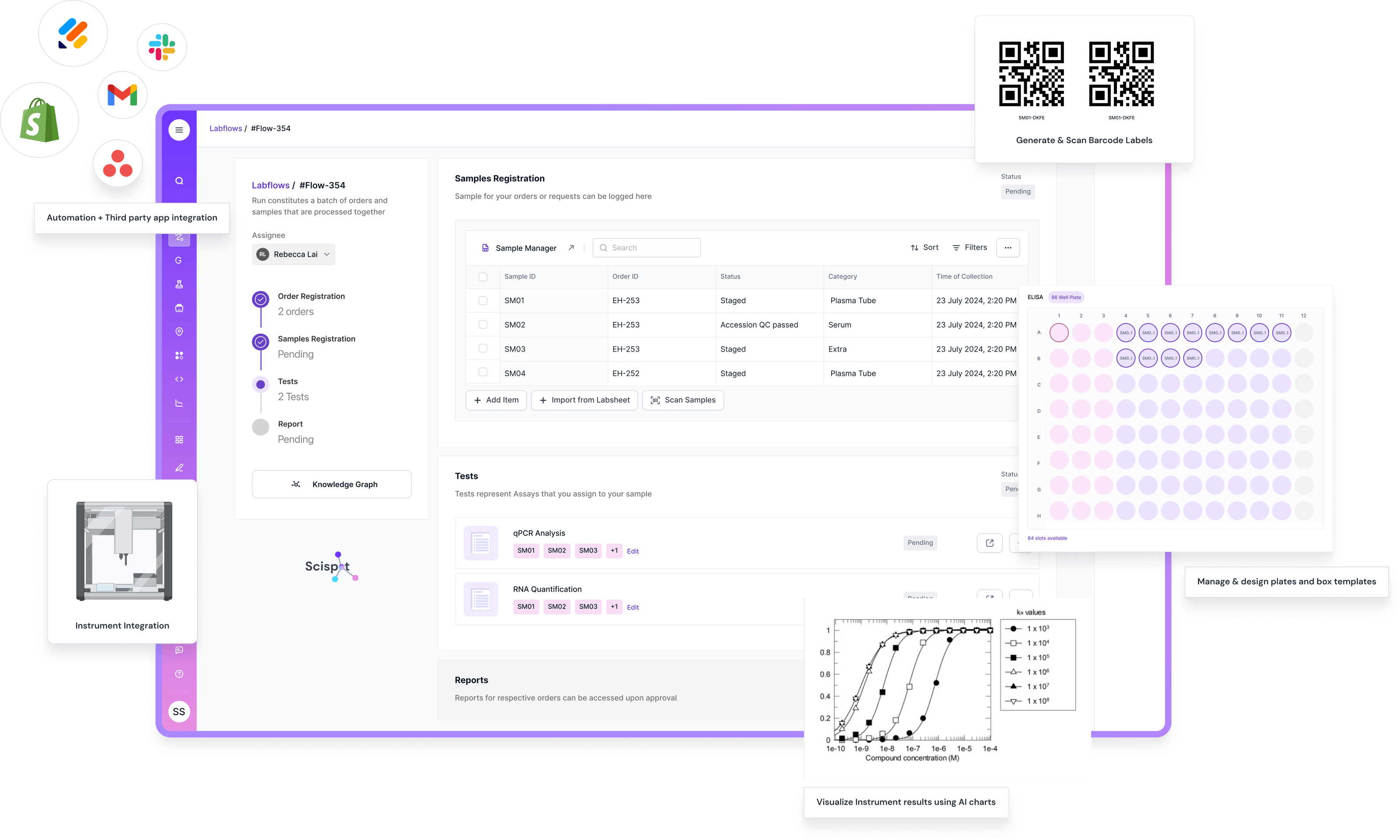
Some caveats & what to watch
While the promise is big, it’s important to acknowledge the assumptions and trade-offs. First, the quality of your search experience depends on how well your systems are integrated, how well your metadata is defined, and how much of your lab’s data flows into the platform. If many key systems remain disconnected, the answer set will be partial.
Second, while the semantic / AI layer is powerful, it still relies on data quality. If your samples aren’t consistently labeled, run logs are inconsistent, the AI may struggle. So there’s an upfront investment in standardising processes.
Third, even though the platform advertises “one-click integrations”, real-life instrument connectivity often requires configuration, validation, and change management. The more heterogeneous your stack, the more effort might be needed.
Finally, implementation means change management: scientists used to digging through folders will need to trust the agent, ask in new ways, and shift behaviours.
The emotional promise: from chaos to confidence
What feels so compelling about Scispot’s offer is the shift in feeling. From “I hope I find the file” to “I ask and I know”. From siloed spreadsheets and lost manual logs to a unified, searchable, conversational lab memory.
A bench scientist can stop wasting time. A lab manager can worry less about instrument downtime and consumables running out. A QA person can sleep better knowing traceability is built-in. The whole lab gains a kind of memory, a structure, an insight engine.
When your lab’s data becomes accessible via search that understands context, it changes everyday work: quicker decisions, fewer errors, smoother audits, more time left for real science.
Final thoughts
If you’re hunting for the “best digital lab search services”, start by mapping your need: Are you discovering reagents in literature? Are you searching just within an ELN? Or are you trying to query your entire lab’s ecosystem—instruments, samples, workflows, data, reports? If it’s the last, then Scispot’s AI Agent represents one of the strongest options on the market.
By embedding semantic and contextual search into an integrated operating system that connects instruments and apps, Scispot transforms search from a chore to a capability, from data-harvesting to insight-generation. The emotional payoff is freeing time, reducing frustration, and enabling your lab to act faster.
If you like, I can walk you through how to set up 10 real-agent prompts tailored to your lab stack, or build a sample integration map of systems to entities to fields for Scispot. Would that be helpful?
